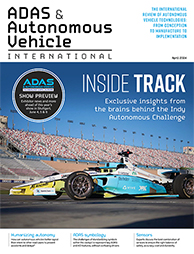Returning in 2022. Dates to be confirmed
Click here to Visit Autonomous Vehicle Test & Development 'Virtual' Live

Returning in 2022. Dates to be confirmed
Click here to Visit Autonomous Vehicle
Test & Development 'Virtual' Live

 Heikki Laine, VP of product and marketing at Cognata, explains why manually tagged data is no longer sufficient for the effective training of AVs and suggests the solution. He will talk more about this in his presentation at the Autonomous Vehicle Test & Development Symposium. For more information, up-to-date programs and rates, click
Heikki Laine, VP of product and marketing at Cognata, explains why manually tagged data is no longer sufficient for the effective training of AVs and suggests the solution. He will talk more about this in his presentation at the Autonomous Vehicle Test & Development Symposium. For more information, up-to-date programs and rates, click 